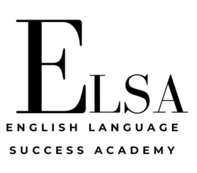The ability to navigate efficiently and effectively is crucial for any scholar or researcher. This article explores the essential skills of conducting thorough literature searches, critically analyzing and synthesizing sources, and properly citing your references. Whether you’re a graduate student or a seasoned academic looking to refine your skills, these techniques will help you chart a course through the complex waters of scholarly research.
Techniques for Effective Literature Searches
The foundation of any robust research project or literature review is a comprehensive and well-executed literature search. Here are some key strategies to enhance your search efficiency and effectiveness:
1. Define Your Research Question: Begin by clearly articulating your research question or topic. This will guide your search terms and help you stay focused.
2. Identify Key Concepts and Terms: Break down your research question into its main concepts. Identify synonyms, related terms, and any discipline-specific jargon that might be relevant.
3. Utilize Boolean Operators: Learn to use AND, OR, and NOT to combine search terms effectively. For example, “social media” AND “mental health” NOT “adolescents” will narrow your results to studies on social media and mental health that don’t focus on adolescents.
4. Leverage Advanced Search Features: Most academic databases offer advanced search options. Familiarize yourself with filters for publication date, peer-review status, and document type to refine your results.
5. Explore Multiple Databases: Don’t limit yourself to one database. Different platforms may yield different results. Common academic databases include JSTOR, PubMed, Web of Science, and Google Scholar.
6. Use Citation Chaining: Once you find a relevant article, look at its references (backward chaining) and articles that have cited it (forward chaining) to expand your search.
7. Set Up Alerts: Many databases allow you to set up email alerts for new publications matching your search criteria, helping you stay current in your field.
Critically Analyzing and Synthesizing Sources
Once you’ve gathered a collection of relevant sources, the next step is to critically analyze and synthesize this information. This process involves more than just summarizing; it requires you to evaluate the quality of the research, identify patterns and themes, and draw connections between different studies.
1. Evaluate Source Credibility: Consider the author’s credentials, the publication venue, and the peer-review status. Be wary of predatory journals or non-academic sources.
2. Assess Methodology: Examine the research methods used in each study. Are they appropriate for the research question? What are the limitations?
3. Identify Key Findings and Themes: As you review each source, note the main findings and recurring themes across different studies.
4. Look for Contradictions and Gaps: Pay attention to areas where studies disagree or where there seems to be a lack of research. These can be fruitful areas for further investigation.
5. Create a Synthesis Matrix: Organize your findings in a table or matrix that allows you to compare different sources across key themes or variables.
6. Develop Your Own Perspective: As you synthesize the literature, start to form your own insights and arguments based on the patterns and gaps you’ve identified.
Proper Citation and Referencing
Proper citation is not just about avoiding plagiarism; it’s about giving credit where it’s due and allowing readers to trace your sources. Different academic disciplines often prefer different citation styles, with APA, MLA, and Chicago being among the most common.
American Psychological Association (APA) Style:
– Used primarily in social sciences
– In-text citation example: (Author, Year)
– Reference list entry example:
Author, A. A. (Year). Title of work. Publisher Name.
Modern Language Association (MLA) Style:
– Common in humanities
– In-text citation example: (Author Page number)
– Works Cited entry example:
Author’s Last Name, First Name. Title of Book. Publisher, Year.
Chicago Style:
– Often used in history and some humanities
– Offers both notes and bibliography system and author-date system
– Bibliography entry example:
Last Name, First Name. Title of Book. Place of publication: Publisher, Year.
Regardless of the style you use, consistency is key. Many researchers find citation management software like Zotero, Mendeley, or EndNote helpful for organizing sources and generating citations.
Elsa Says:
Mastering research methods and literature reviews is an ongoing process that forms the backbone of academic inquiry. By honing your skills in literature searches, critical analysis, and proper citation, you equip yourself to contribute meaningfully to your field of study. Remember, the goal is not just to collect information, but to engage with it critically and synthesize it into new insights. Stay curious, be thorough, and always maintain academic integrity in your research journey.


